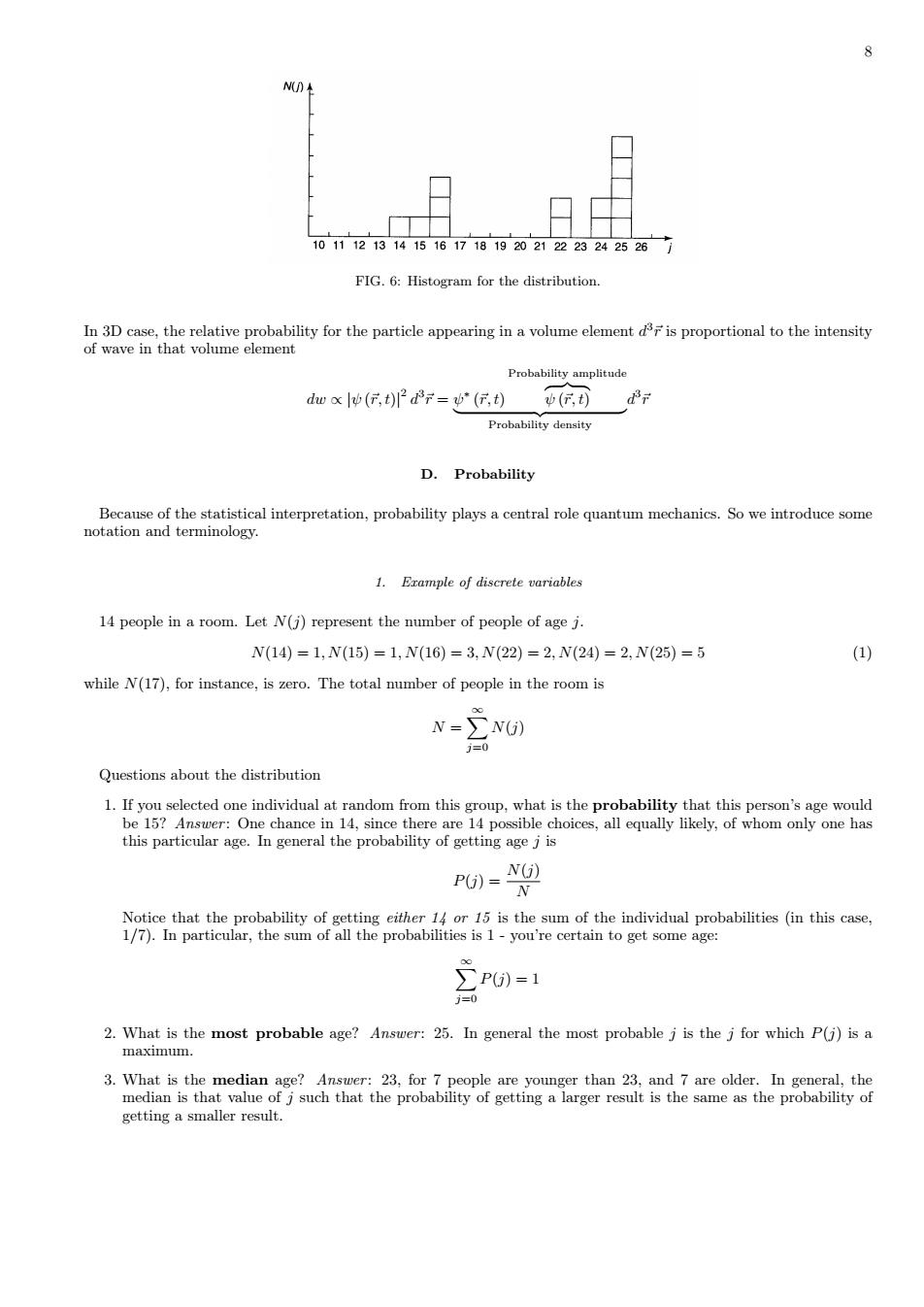正在加载图片...

◇ 1011121314151617161920212232425267 FIG.6:Histogram for the distribution etyfor the partice apperingn vome mentoprtiono the intnity Prob ility amplitud dxlw(,3F-(,t)p(,)7 Probability density D.Probability Bec use of the statistical interpretation,probability plays acentral role quantum mechanics.So we introduce ome notation and terminology. 14 people in a room.Let N(j)represent the number of people of age j. N(14)=1,N(15)=1,N(16)=3,N(22)=2,N(24)=2,V(25)=5 while N(17)for instance,is zero.The total number of people in the room is Questions about the distribution this particular age.In general the probability of getting age jis PG)-NU) PG)=1 0 2.What is the most probable age?Answer:25.In general the most probable j is the j for which P()is a maximum. getting a smaller result.8 FIG. 6: Histogram for the distribution. In 3D case, the relative probability for the particle appearing in a volume element d 3⃗r is proportional to the intensity of wave in that volume element dw ∝ |ψ (⃗r, t)| 2 d 3 ⃗r = ψ ∗ (⃗r, t) Probability amplitude z }| { ψ (⃗r, t) | {z } Probability density d 3 ⃗r D. Probability Because of the statistical interpretation, probability plays a central role quantum mechanics. So we introduce some notation and terminology. 1. Example of discrete variables 14 people in a room. Let N(j) represent the number of people of age j. N(14) = 1, N(15) = 1, N(16) = 3, N(22) = 2, N(24) = 2, N(25) = 5 (1) while N(17), for instance, is zero. The total number of people in the room is N = ∑∞ j=0 N(j) Questions about the distribution 1. If you selected one individual at random from this group, what is the probability that this person’s age would be 15? Answer : One chance in 14, since there are 14 possible choices, all equally likely, of whom only one has this particular age. In general the probability of getting age j is P(j) = N(j) N Notice that the probability of getting either 14 or 15 is the sum of the individual probabilities (in this case, 1/7). In particular, the sum of all the probabilities is 1 - you’re certain to get some age: ∑∞ j=0 P(j) = 1 2. What is the most probable age? Answer : 25. In general the most probable j is the j for which P(j) is a maximum. 3. What is the median age? Answer : 23, for 7 people are younger than 23, and 7 are older. In general, the median is that value of j such that the probability of getting a larger result is the same as the probability of getting a smaller result